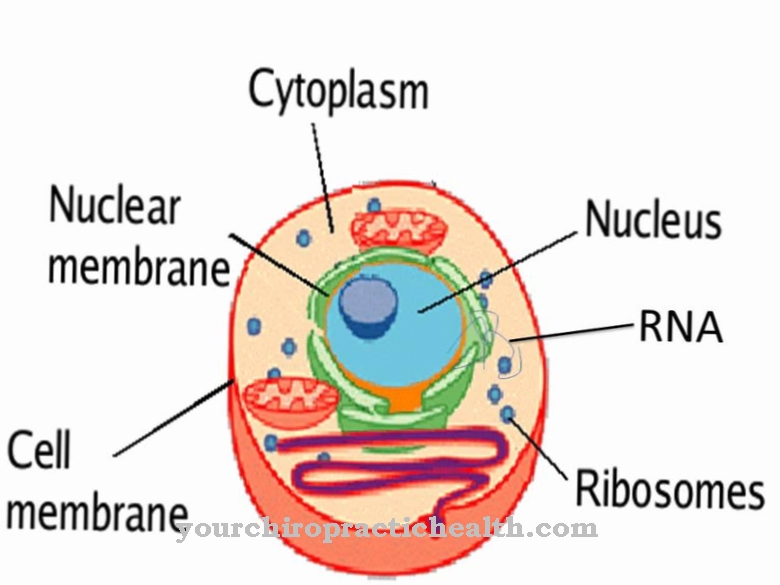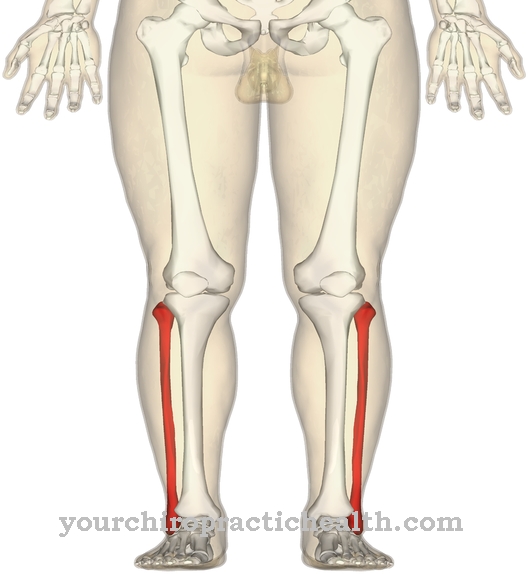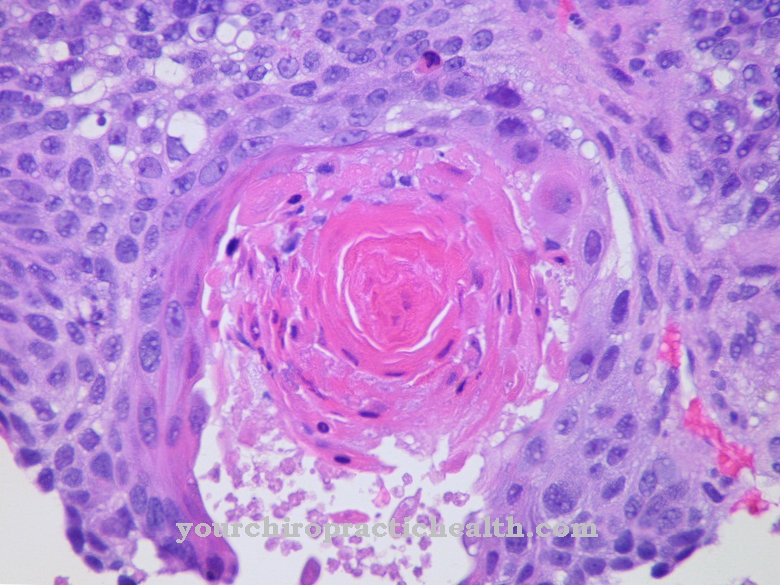At the Pericardium it is a sack of connective tissue that envelops the human heart. He also bears the name Pericardium.
What is the pericardium?
The pericardium is known as the pericardium, pericardum, or cavitas pericardialis. It surrounds the human heart with two layers of fabric. Thanks to a narrow sliding layer, the double-walled bag allows the organ to move. Serous fluid, also called liquor pericardii, in an amount of 10 to 15 milliliters is used as a lubricant. While the inner layer of the pericardium is called the visceral sheet or epicardium, the outer layer is called the parietal pericardium.
Anatomy & structure
The pericardium is composed of two sections. These are the pericardium fibrosum and the pericardium serosum. The pericardium fibrosum is the outer layer of the pericardium and is formed from tight connective tissue. On the basal side, there is an adhesion with the diaphragm and the pleura (pleura). The pericardium serosum consists of two leaves (laminae). These are the lamina visceralis pericardi, also called the epicardium, lying directly on the heart, and the lamina parietalis pericardii. The latter is fused with the pericardium fibrosum.
In the middle between the two leaves of the pericardium serosum there is a space known as the pericardial cavity (Cavitas pericardii). Approx. 10 to 12 milliliters of pericardial fluid are present in this cavity. The secreted liquid can reduce the friction between the two leaves. In the large blood vessels, the pericardial leaves turn over, so that they merge into one another. The proximal vessel sections are enveloped in the process. There are some hollowed structures or bulges near the vessels between the transition sites.
Due to the allocation of the pericardium in the direction of the heart, two spaces are formed in the pericardium: the sinus transversus pericardii and the sinus obliquus pericardii. The outgoing blood vessels such as the pulmonary trunk and the aorta (main artery) are separated from the pulmonary veins, the vena cava and the inferior vena cava, which are supplying vessels, by the sinus transversus pericardii. The pericardial sinus is located between the pulmonary veins that run towards the heart. The small branches of the phrenic nerve and the vagus nerve ensure the sensitive innervation of the pericardium. They are also known as the rami pericardiaci.
Function & tasks
The functions and tasks of the pericardium are diverse. Thanks to the firm connections that exist on the heart and diaphragm, it ensures that the organ is held securely in its position. In this way, important structures of the chest cavity such as the large blood vessels, the sternum and the space between the lungs can always be in the same position in relation to the heart. At the same time, the pericardium separates the heart from other thoracic organs. The connective tissue structure of the pericardium, which can hardly be stretched, prevents the heart from overstretching in the event of severe physical overexertion.
If there are fluctuations in ejection caused by changes in blood pressure or breathing, the fixation of the pericardium brings about an equalization of the ejection volume between the left and right ventricles. The narrow connection between the pericardium and epicardium in the form of a narrow gap is also useful. In this way, in the event of cardiac insufficiency, the stretching of the heart muscle fibers is passively maintained. The function of the fluid within the pericardial cavity is to reduce the frictional resistance in the direction of the heart.
Basically, the pericardium serves as a shifting layer. On the one hand, it surrounds the heart as protection and, on the other hand, ensures that the heart muscle (myocardium) contracts and expands.
Diseases
The human pericardium can be affected by various diseases. This primarily includes inflammation of the pericardium (pericarditis). The causes are varied. In most cases it is caused by viruses such as adenoviruses, Coxsackie viruses, or echoviruses. However, in some patients, pericarditis is the result of another condition. Mostly metabolic, autoimmune, lung or kidney diseases come into consideration. Inflammation of the pericardium is usually noticeable in the form of sharp pain in the area of the sternum and increased body temperature. If the patient moves, takes a deep breath or coughs, this often increases the pain.
In the further course of the pericardial inflammation, pericardial effusion is also possible. The pericarditis causes fluid to accumulate inside the pericardium. If the fluid exceeds a certain amount, it can adversely affect the heart's actions. In the case of larger effusions, a puncture is therefore necessary for treatment.
The therapy for pericardial inflammation depends on the triggering causes. In addition to viruses, bacteria are also among the most common sources. Most patients are given anti-inflammatory drugs and pain relievers for pericarditis caused by an infection. ACE inhibitors can also be given to combat heart failure, as well as diuretics for drainage. In the case of secondary forms, the focus is on the treatment of the respective underlying disease.
Another possible disease of the pericardium is Dressler's syndrome, also known as postmyocardial syndrome. It occurs after a heart attack and is accompanied by anginal pain. Most of the time, the affected people also suffer from changes in the blood count, fever and pericardial effusion. In very rare cases, a tumor of the pericardium can also occur.
Typical & common heart diseases
- Heart attack
- Pericarditis
- Heart failure
- Atrial fibrillation
- Myocarditis



























